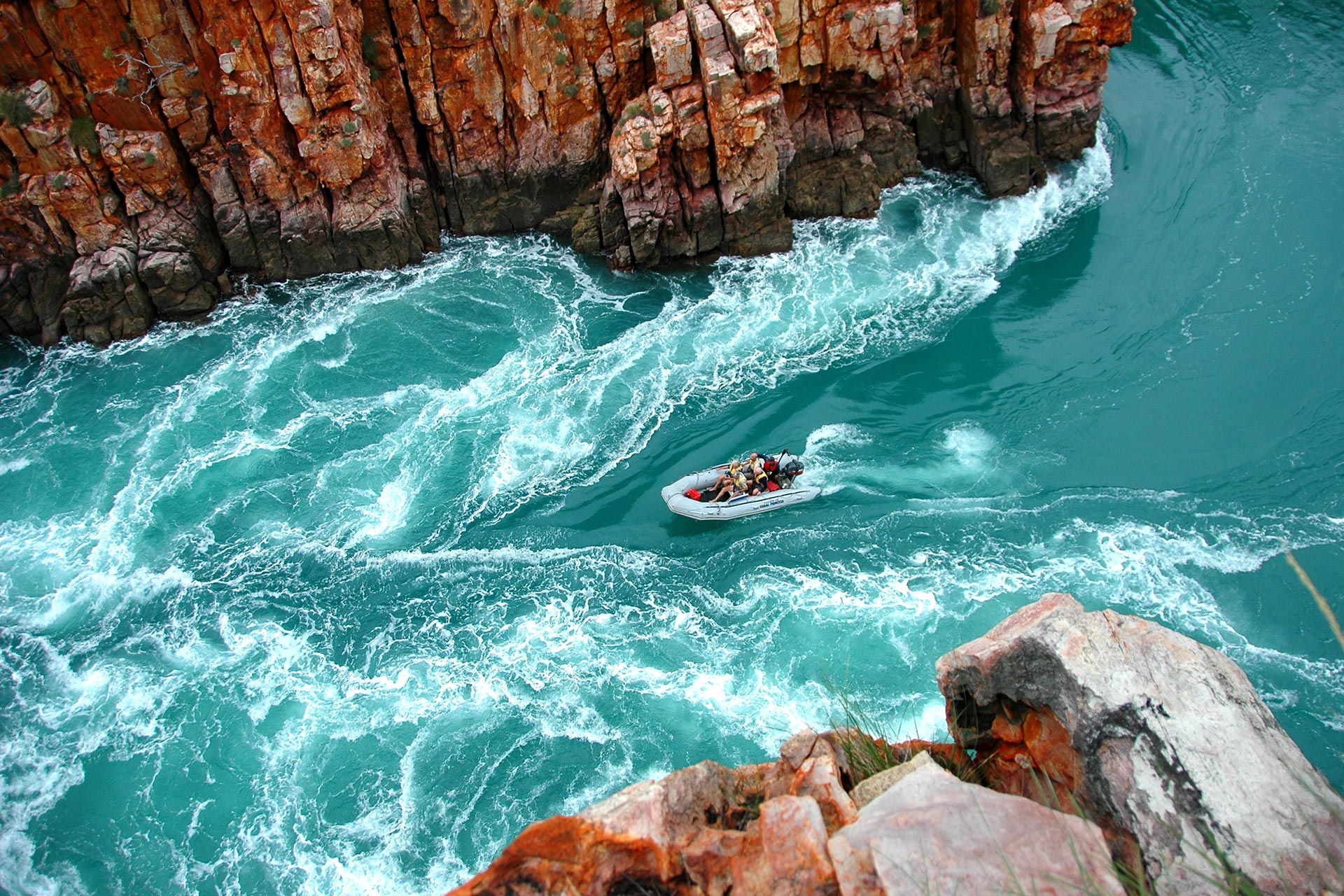
28 Jul 5 Tips for Capturing Beautiful Photos While Cruising
Sometimes the most beautiful sites are sliding by as you travel by boat, particularly when you are on board a cruise in a place as full of photo opportunities as the Kimberley. Capturing those moments while you’re moving isn’t always easy, and it may be frustrating when the subjects of your photos are blurred with the background sharp. But with the right shutter speed and a few tips, you can control the effect of your snaps. You can even purposefully go for some artistic blurring for unique effects.
Here’s a handy guide to help you take control of your photos, and take snaps that will make your memories last a lifetime. Follow these simple instructions, and you’ll be recording the rugged beauty of the Kimberley landscapes from the deck of your cruise ship with ease.
1. Protect your gear
This may sound obvious, but the first step you should take when taking photos on a boat is to be extra careful to keep your camera away from the edge of the deck and wear a strap around your neck. Trust us – the disappointment of motion blur positively pales in comparison to losing your camera and all of your photos with it!
You should also clean your equipment after a salt water shoot, as it can be corrosive to the metal of your camera, lens, or tripod (not to mention cause your gear to stick due to rust). In order to be extra cautious, bring plastic bags in case the weather surprises you as well.
2. Avoid the shakes and motion blur
Many boats will vibrate a lot when the engine is running. This is especially true if you have set up a tripod on deck or are using a hard surface for support your camera. You’ll probably have to lose the tripod unless the engine is switched off. You can also increase your shutter
speed to mitigate the risk of blur. If your camera lens has Vibration Reduction (VR) or Image Stabilisation, then this will help as well. To freeze motion, use a faster shutter speed and try an ISO of 300 or faster.
There is no one right answer to the correct ISO speed. Factors such as the time of day, weather and your equipment will make the best ISO variable on the day and time. When you’re working out what shutter speed you need, consider factors like the speed your subject is moving at, your distance from what you wish to shoot, and the angle you’re shooting from. However, as a rule of thumb, increasing the ISO will allow you to freeze a fast movement like rippling water or a croc swimming.
3. Scale it up
To land the perfect shot of a natural phenomenon, you’ll also need effective composition. If you want to capture an impressive natural site while on the water, add a boat, person or vehicle for some scale. A sense of scale can really amp up the impressiveness of your landscapes. Plus it’s nice to remember the vehicle you used to take your trip or the people you were with – it can make your photos much more unique to your experience and enhance your memory of the day.
4. Capturing moving water
To capture the movement of water (like that in a waterfall, for example), try slowing
down the shutter speed. Experiment with different shutter speeds, as the right one will depend on available light, where you’re shooting from and the desired effect.
5. Take extra shots
It’s hard to compose a good photo when you can’t keep your camera straight due to the motion of the boat. We suggest taking lots of photos. This will increase your chance of capturing a terrific shot, and when you are at home going through your photos you can compare the different shutter speeds, modes and apertures to better guide your photography next time. Remember you can always straighten them up on your computer when you get home, too. That’s the beauty of digital photos!

